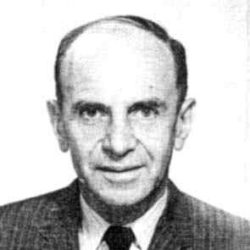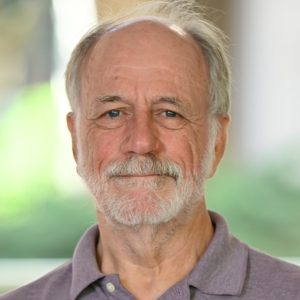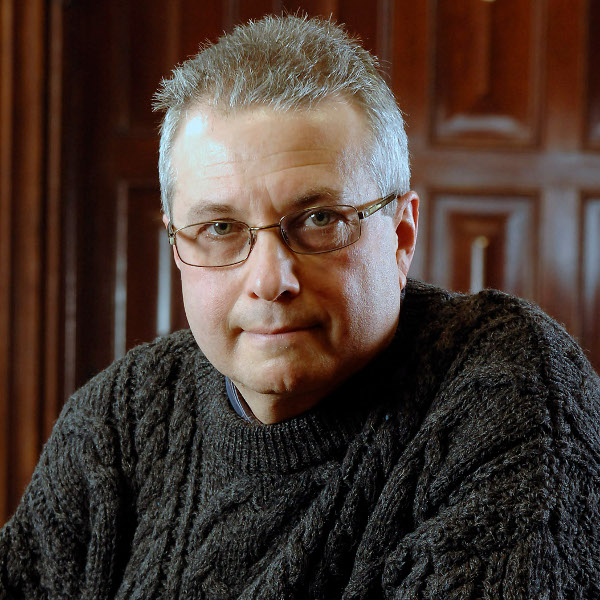Brauer Lecture
Brauer Lectures
The UNC Alfred T. Brauer Lectures

Alfred Theodor Brauer, 1894–1985, had a profound impact on the Mathematics Department at UNC. Born in Germany, he studied at the University of Berlin and earned his degree in 1928 under Issai Schur. He continued lecturing there until 1936 when he was forced to resign by the Nazi government due to his Jewish heritage. In 1937 he declined Hermann Weyl’s invitation to come to the United States and, instead, gave the names of other he felt were in more immediate need of help. From 1936-1938, Brauer continued research while teaching junior-high level mathematics at a private school in Berlin until “Kristallnacht.” He successfully fled the country in 1939, finally accepting Weyl’s invitation to the Institute for Advanced Study in Princeton. He came to North Carolina in 1942, teaching here until his retirement in 1966.
During this time at UNC, he founded the Mathematics and Physics Library, using his knowledge and expertise to establish a superb collection. In appreciation for this effort the library was named for him in 1976, later being absorbed into the UNC Libraries system. Alfred Brauer was honored by the University with the award of a Kenan professorship in 1959, the Tanner Award for excellence in undergraduate teaching in 1965, and an honorary doctor of legal letters degree in 1972. He has also received honors from outside the University, including the Oak Ridge Science Award and the G.W.F. Hegel Medal from the University of Berlin.
In 1975 an Alfred T. Brauer Instructorship was created at Wake Forest University, where he taught after his retirement from the University of North Carolina. The Alfred Brauer Fund was established by the Department of Mathematics in 1984 on the occasion of his ninetieth birthday. For more on Brauer’s biography, see the article “Alfred T. Brauer: Teacher, Mathematician and Developer of Libraries”.
2024 Brauer Lecturer

The 2024 Brauer Lectures will be given by Peter J. Olver, Professor in the Department of Mathematics at the University of Minnesota.
Peter earned his Ph.D. from Harvard University in 1976 under the mentorship of Prof. Garrett Birkhoff. Following postdoctoral roles at the Universities of Chicago and Oxford, he has been a faculty member at the University of Minnesota’s School of Mathematics since 1980. He held the position of Department Head from 2008 to 2020. Peter’s research focuses on the application of symmetry and Lie groups to differential equations. Throughout his career, he has made significant contributions to diverse fields such as partial differential equations, calculus of variations, mathematical physics, fluid mechanics, elasticity, quantum mechanics, Hamiltonian mechanics, geometric numerical methods, differential geometry, classical invariant theory, algebra, computer vision, image processing, anthropology, and beyond. In recognition of his work, Peter was elected a fellow of the Institute of Physics in 2004, the American Mathematical Society in 2013, and the Society for Industrial and Applied Mathematics in 2014.
The lectures will take place February 27-29, 2024.
-
Lecture 1: Fractalization, quantization, and revivals in dispersive systems
- The Talbot effect describes the remarkable evolution, through spatially periodic linear dispersion, of rough initial data, producing fractal, non-differentiable profiles at irrational times and, for asymptotically polynomial dispersion relations, quantized structures and revivals at rational times. Such phenomena have been observed in dispersive waves, optics, and quantum mechanics, and have intriguing connections with number theoretic exponential sums. I will present recent results on the analysis and numerics for linear and nonlinear dispersive wave models, both integrable and non-integrable, as well as integro-differential equations modeling interface dynamics and Fermi-Pasta-Ulam-Tsingou systems of coupled nonlinear oscillators.
- Lecture 2: Analysis and reassembly of broken objects
- The problem of analyzing and reassembling broken objects appears in a broad range of applications, including jigsaw puzzle assembly, archaeology (broken pots and statues), surgery (broken bones and reassembly of histological sections), paleontology (broken fossils and egg shells), and anthropology (broken bones and lithics). I will discuss recent progress on such problems based on new and classical mathematical tools, including differential geometry, invariant signatures, and machine learning.
- Lecture 3: Two new developments concerning Noether’s Two Theorems
- The first part impacts Noether’s Second Theorem, which concerns variational problems admitting an infinite-dimensional symmetry group. I first recall the two well-known classes of partial differential equations that admit infinite hierarchies of higher order generalized symmetries: 1) linear and linearizable systems that admit a nontrivial point symmetry group; 2) integrable nonlinear equations such as Korteweg–de Vries, nonlinear Schrödinger, and Burgers’. I will then introduce a new general class: 3) underdetermined systems of partial differential equations that admit an infinite-dimensional symmetry algebra depending on one or more arbitrary functions of the independent variables. An important subclass of the latter are the underdetermined Euler–Lagrange equations arising from a variational principle that admits an infinite-dimensional variational symmetry algebra depending on one or more arbitrary functions of the independent variables. According to Noether’s Second Theorem, the associated Euler–Lagrange equations satisfy Noether dependencies and are hence underdetermined; examples include general relativity, electromagnetism, and parameter-independent variational principles.The second part concerns Noether’s First Theorem, which, as originally formulated, relates strictly invariant variational problems and conservation laws of their Euler–Lagrange equations. The Noether correspondence was extended by her student Bessel-Hagen to divergence invariant variational problems. A key issue is when is a divergence invariant variational problem equivalent to a strictly invariant one. Here, I highlight the role of Lie algebra cohomology in resolving this question. The talk concludes with some provocative remarks on the role of invariant variational problems in the modern formulation of fundamental physics.
2023 Brauer Lecturer
The 2023 Brauer Lectures were given by Carlos Kenig, Louis Block Distinguished Service Professor in the Department of Mathematics at the University of Chicago.
Carlos earned his PhD at the University of Chicago in 1978 under the direction of Alberto Calderon. After holding positions at Princeton and Minnesota, he returned to the University of Chicago in 1985. Carlos’s recognitions include the Salem Prize (1984), the Bocher Prize (2008), three time ICM speaker (1986, 2002, 2010), elected member of the National Academy of Sciences (2014), and former President of the International Mathematical Union. Carlos is an expert in harmonic analysis and partial differential equations, and he is an excellent expositor and lecturer for both specialized and general audiences.
The lectures took place February 6-8, 2023.
-
Lecture 1: Asymptotic simplification for solutions of nonlinear wave equations
- In this lecture I will describe the progress made in the last 14 years, in our understanding of the long-time behavior of large solutions to the energy critical focusing nonlinear wave equation. In the last part of the talk I will concentrate on progress (with Duyckaerts and Merle) on the asymptotic simplification for large time, into sums of modulated static solutions plus a linear term, in all odd dimensions, in the radial case.
- Lecture 2: Wave maps into the sphere
- In this talk we will introduce wave maps, an important geometric flow, and discuss, for the case when the target is the sphere, the asymptotic behavior near the ground state (without symmetry) and recent results in the general case (under co-rotational symmetry) in joint work with Duyckaerts, Martel and Merle.
- Lecture 3: New channels of energy for wave equations, new non-radiative solutions and soliton resolution
- We will discuss the role of non-radiative solutions to nonlinear wave equations, in connection with soliton resolution. Using new channels of energy estimates we characterize all radial non-radiative solutions for a general class of nonlinear wave equations. This is joint work with C.Collot, T. Duyckaerts and F. Merle.
Pre-Pandemic Brauer Lecturers
To honor the memory of Alfred Brauer and to recognize his many contributions to the Mathematics Department at UNC, the Alfred Brauer Lectures were begun in 1985.
- The 2019 Brauer Lectures were given by Dr. Peter Constantin of Princeton University.
- The 2018 Brauer Lectures were given by Dr. Mina Aganagic on April 10-12, 2018.
- The 2017 Brauer Lectures were given by Mikhail Khovanov, on March 29-31, 2017.
- The 2016 Brauer Lectures were given by Stan Osher, on April 20-22, 2016.
- The 2015 Brauer Lectures were given by Michael Hopkins, on March 23-25, 2015.
- The 2014 Brauer Lectures were given by Simon Donaldson, on March 24-26, 2014.
- The 2013 Brauer Lectures were given by Vaughan Jones, University of California at Berkeley and Vanderbilt University, on March 4-6, 2013.
- The 2012 Brauer Lectures were given by Alex Lubotzky, Hebrew University, on April 16-18, 2012.
- The 2011 Brauer Lectures were given by Gerard Laumon of CNRS and Paris-Sud, Orsay, on March 28-30, 2011.
- The 2010 Brauer Lectures were given by Alex Eskin of the University of Chicago.
- Brauer Lectures prior to 2010


